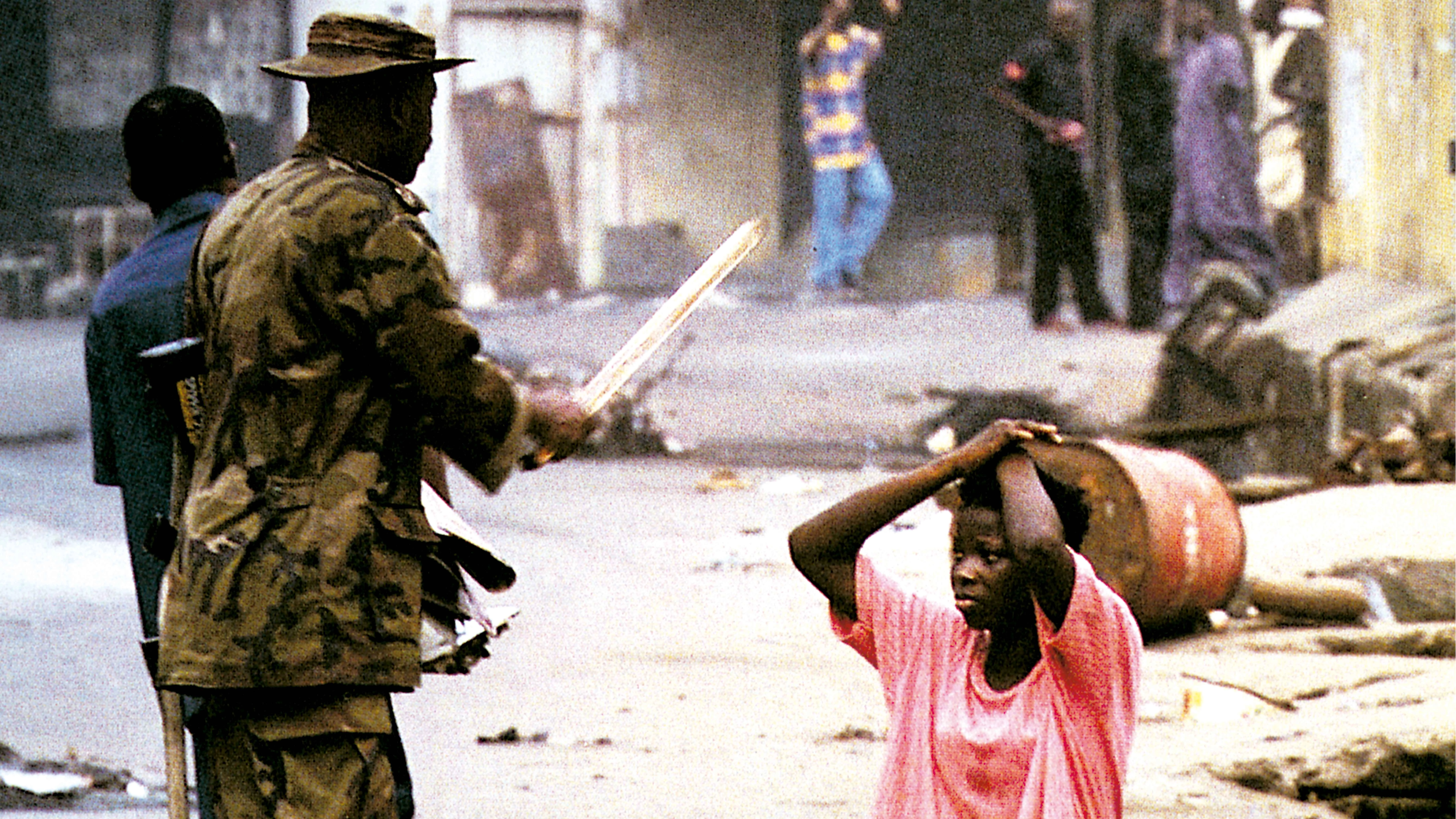
Nigerian woman withWarhol skirt threatened by soldier in Lagos, 2002
In the installation of Antoni Muntadas, the production of political discourse is summed up in the brief journey between the light of the stand and the printing press, showing the ideological assembly line that joins statement and headline; in the image of Pedro Almodóvar in Cannes, the message is summed up in the repeated snapshot by a swarm of photographers: reporters without whom the event does not exist, standing on top of it as in the food distribution in Iraq or combining their images for greater dramatic effect, as in the computer collage of the same conflict that led to the firing of its author. It is for this reason that the property of the eye is so important; if in the first Gulf War the CNN held the main role, the wars of George W. Bush in Afghanistan and Iraq have seen the leadership of the American media threatened by the rise of Arab TV channels, and since September 11 Al-Jazeera has been the main counterweight of Fox News in the information on the conflict with the Muslim world. These are also wars of images, and although popular Western culture pollutes the anti-American demonstrations staged in the Third World, Marilyn Monroe or James Dean have few possibilities of replacing the ayatollahs, imams and sheiks as icons...[+]






